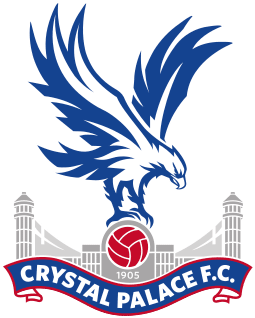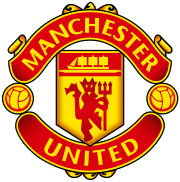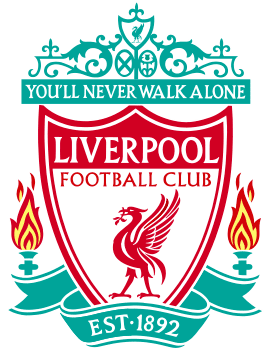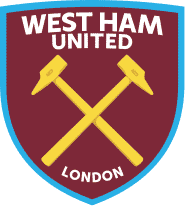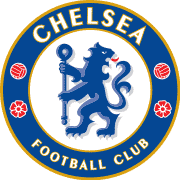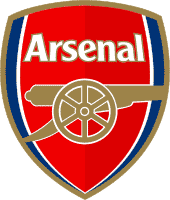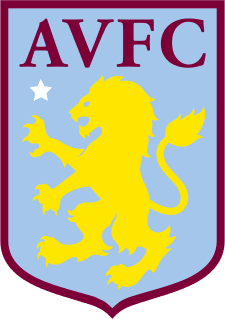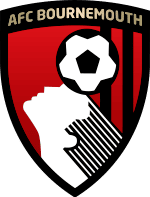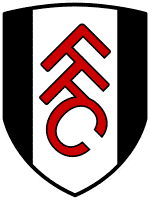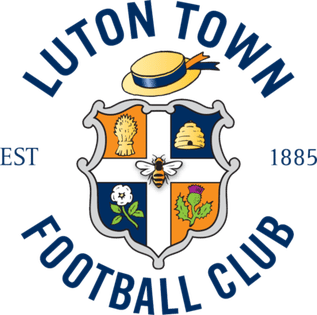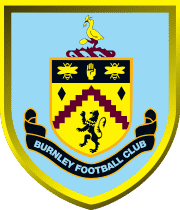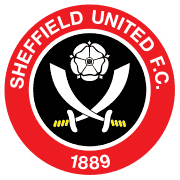Crystal Palace FC Tryouts & Club Guide: History, Stadium, Players, and More!

Welcome!
Discover the world of soccer with fcscout.com, your go-to scout for club tryout information, club guides, player profiles, in-depth product reviews, and more. We’re dedicated to exploring and revealing the best in each domain, empowering you with knowledge to make informed choices.
Thank you for being here!
Hi, I’m Carlos! A coach, sports enthusiast, and the founder of FCScout.com.
I fell in love with the game at a very young age like many of you. I’ve been following and playing soccer for many years.
Throughout my career, I always enjoyed helping soccer players chase their dreams, which is why I started this website. I wanted to reach a larger audience outside of my local area and fcscout.com was born.
This website is a platform I will be using to update club pages on any tryouts, stadiums, players, tech, and more from clubs around the world. I also create free recruitment profiles for players looking to have that extra competitive edge when reaching out to clubs.
That’s it. That’s my pitch for you to stick around (or browse the site as you please).
This is already too much text for a “see more” drop-down button thing. If you want to reach out to me, head on over to my contact page 🙂

Crystal Palace Football Club is a professional football club based in Selhurst, South London, England. The club competes in the Premier League, the highest level of English football.
Crystal Palace FC Youth Development System
Crystal Palace FC Academy
Crystal Palace Academy strives to give every young player the best holistic experience towards their ambition of becoming a professional football player.
The Academy will provide a safe environment for players to learn and enjoy the game.
With first-class facilities, specialist support staff across various disciplines and an elite games programme, we hope that every player will have both a positive and enriching experience with us.

Vision
Every Crystal Palace Academy player and staff member has the opportunity reach their full potential.
Objective
At first team level, the academy aims to have staff and players competing across leagues such as the Premier League, EFL Championship, EFL League One, EFL League Two, National League, Serie A, Bundesliga, LaLiga, and Ligue One.
Strategy
Across the phases of development, the Crystal Palace Academy, through its staff, coaching and playing philosophy and everyday endeavor, strives to do the following.
Crystal Palace FC Professional Development Phase
| Education | Support potential second careers through qualifications and guidance |
| Sports science | Address the specific needs of the individual in a bid to optimize player potential |
| Medical | Execute individualized movement pattern maximization |
| Football | Develop further YDP work and teach the tactical adaptability necessary to thrive as a professional player |
Crystal Palace FC Youth Development Phase
| Education | Provide holistic support and tutoring towards high GCSE attainment |
| Sports performance | Increase emphasis on Athletic Development in alignment with the individual’s maturational status and the exploitation of game speed |
| Medical | Mitigate growth and maturation related risks and conditions |
| Football | Develop position-specific techniques and movement patterns, working around our Player Profiles. Increase players’ tactical awareness |
Crystal Palace FC Foundation Development Phase
| Education | Support the best attainment and highest attendance within education |
| Sports performance | Introduce fundamental movement skills and the exploration of game speed |
| Medical | Screen for and address outliers |
| Football | Develop effective ball manipulation, using a wide range of game-related techniques |
Crystal Palace FC ACADEMY PLAYING PHILOSOPHY
At Crystal Palace F.C. our objectives are to maximize our players’ potential as they grow and develop from age group to age group, through a detailed training and games programme. We aim to enhance the players’ capabilities and knowledge technically, tactically, physically, psychologically and socially. Our philosophy is about six situations within the game but is primarily a possession-based approach that requires excellence in spatial awareness, outstanding movement, technical adaptability off both feet, tactical awareness and adaptability, fluidity, strength and pace of movement and a collective respect and appreciation of working with each other.

Our six situations are:
- Understanding how and when to play out from the back
- Controlling and creating in the middle third
- Creating and finishing in the final third
- Press our opponents high if and when appropriate
- Retreat organised, compact and ready to re-press in the middle third
- Be compact, controlled and calculating in our defending third
Crystal Palace F.C’s Academy Category 1 Status
The Premier League has awarded Crystal Palace F.C’s Academy Category 1 status following an independent assessment – the highest category possible for academies in the country.
The decision means that the club will rank alongside 26 other elite Category 1 Academies such as Liverpool, Manchester United, Arsenal and Chelsea. The promotion ensures that Palace’s games programme is also enhanced – the Under-18s will play in the Premier League: South division, whilst the Under-23s will compete in Premier League 2 next season.
Palace has a rich history in developing world-class football talent, with 36 players coming through the Academy ranks to reach the first-team in the last 15 years, making more than 1,000 appearances collectively for the Eagles. The latest Academy graduate coming through the ranks was full-back Tyrick Mitchell, who made his first appearance during July’s match against Leicester City.
The club secured a long-term lease for the Academy site opposite its first-team training ground on Copers Cope Road, Beckenham, in December 2018, with planning permission for a major upgrade to facilities formally granted last month, with works well underway.

Club Chairman Steve Parish said: “Achieving Category 1 status is the culmination of an immense amount of hard work from our staff, and it is an incredible achievement in such a short space of time since securing the land and planning permission.
“Our ambition is to have one of the country’s leading football academies to capitalise on the hotbed of footballing talent in south London. The investment in the playing facilities, education offering and player care provision will enable us to attract and develop the next generation of Wilfried Zahas and Aaron Wan-Bissakas.
“Furthermore, we are committed to having a transformational impact on the lives of the wider community and especially the 200 plus boys that are directly in our care at any one time, whether they make it to the professional ranks or not.
“The whole Academy site will also be widely used by the club to enhance our presence in the community – not just the playing facilities. We are looking at ways we can positively affect the lives of young people using the education facilities for job training and further education.
“I would finally like to take this opportunity to thank the thousands of our supporters who have already generously committed to becoming Academy Founder Members, helping us further enhance this magnificent project for the benefit of our young players for years to come.”
The enhanced site, which will be fully accessible, is to be made available for community use through the Palace for Life Foundation, as the charity continues its school holiday programmes, disability teams and community engagement initiatives, providing development opportunities for thousands of young south Londoners.
The development includes:
- a central area of open-plan office and meeting spaces together with a restaurant common / meeting area that will be the hub of the Academy, linked to terraces overlooking the new ‘show pitch’
- Four classrooms, open-plan office and meeting spaces
- Campus-style internal and external refit to all buildings
- and a new gym and sports science facility
- Fourteen dressing rooms of differing sizes






The playing facilities will be enhanced and expanded to feature:
- A full-size DESSO main pitch (a hybrid grass surface composed of natural grass combined with artificial fibres) with under soil heating
- A covered full-size 3G synthetic pitch, for all-weather use
- A full-size, floodlit 3G pitch
- Creation of six additional pitches of varying sizes for various age groups
Under-23s
Crystal Palace F.C. Under-23s are the under-23 team of Crystal Palace F.C.. They play in the second level of reserve football in England, the U23 Professional Development League 2. The team mainly consists of players under the age of 21 at the club, but does occasionally include first team players.

To view full official roster, please click here.
Under-18s
Crystal Palace F.C. Under-18s are the under-18 team of Crystal Palace F.C.. They play in the second level of academy football in England, the U18 Professional Development League 2.

To view full official roster, please click here.
PALACE FOR LIFE FOUNDATION
Crystal Palace FC helps young south Londoners grow through the power of sport, inspiring them to find a better path in life, for life.
Soccer Schools
Our Soccer Schools in south London are designed by coaches at Palace for Life Foundation and Crystal Palace F.C. to give u7’s to u12’s girls and boys the chance to Train Like a Pro in the school holidays. Our Soccer Schools run from 9am to 3pm and include fun-packed sessions to help youngsters develop their football and meet new friends. For more information contact – Bookings@palaceforlife.org
Our soccer schools include a range of features that have been designed by experienced Palace coaches to give youngsters a sense of what it is like to train like as a professional footballer.
Some of the elements include:
- Fun, practical sessions to enhance player development.
- Interactive workshops to promote respect and fair play.
- We have been running football courses for aspiring young players for over 25 years and all coaches are FA-licensed, DBS-checked and have first aid and safeguarding qualifications.
Players who attend Palace for Life soccer schools in London will have the chance to progress to our Player Development Centres, where they will be able to join our Player Pathway. This leads into the Crystal Palace Academy for those who show the potential to progress.
To learn more about Crystal Palace FC schools, please click here.
College Academies
ACADEMIC AND POST-16 CENTRES
Palace for Life Foundation’s Post-16 Centres offer both male and female players the opportunity to broaden their educational learning while participating in a fully comprehensive training and playing programme.

The students have personalized schedules and timetables in order to balance an in-depth football development programme with an academic qualification. Qualifications cover BTEC Level 1-3, dependent on the venue. All aspects of football are catered for and the programmes support students’ exit routes both academically and in a football environment – with students going on to university, apprenticeships, scholarships and professional football contracts.
The football development centres provide a great opportunity for students to expand their education while learning about and playing the game they all love.
To learn more about this program, please click here.
Primary Schools
Our coaches deliver the Premier League’s Primary Stars programme, supporting the National Curriculum and mentoring teachers. Interventions are provided within PE, Literacy, Numeracy and PSHE. Our Team Mates programme helps develop emotional resilience and confidence while our Stepping Stones initiative supports the transition from primary to secondary school.

To learn more about this program, please click here.
Crystal Palace FC Recruitment Trials
At the time of this writing, there is no official publishing’s on Crystal Palace FC trials. Please come back at a later date while we monitor this club or click here to visit their official news section.
EXPLORE MORE CLUBS!
Explore more professional clubs by continent.
Crystal Palace FC History
The amateur club was one of the original pioneer members of the Football Association in 1863, and it participated in the first ever FA Cup competition in 1871–72, making it all the way to the semifinals. However, following the 1875–76 FA Cup, the club was no longer mentioned in any historical sources. Crystal Palace reemerged on the football scene in 1905 as a professional club and immediately submitted an application to join the Football League. However, their request was denied, and the club was forced to compete in the Southern League instead. Palace did end up joining the Football League in 1920, and for the duration of their league history, they have spent their time competing in the top two divisions of English football. Overall, this has been the case.
They have only finished lower than second tier once since 1964, and that was for a total of three seasons between the years 1974 and 1977. The club earned their highest ever league position of third place in the former First Division, which is now known as the Premier League, in the 1990–91 season. This occurred during their time playing in the top tier, which was in the late 1980s and early 1990s. It was unfortunate for Palace at the end of that season that they were not able to qualify for the UEFA Cup. This was due to the limited number of European places that were available to English teams following the lifting of the UEFA ban that was imposed as a result of the Heysel Stadium catastrophe. It was also during this time that Palace made it all the way to the final of the FA Cup in 1990, but they ended up losing to Manchester United in a replay.
The following year, however, they won the Full Members Cup by defeating Everton in the championship game. In 1992, the team joined the Premier League as one of the original members of the league. They recovered and returned to the Premier League in 2013, where they have remained ever since, and reached another FA Cup final in 2016, again finishing as runners-up to Manchester United. Following their relegation from the Premier League in 1998, Palace went into decline after suffering financial problems that resulted in the club going into administration twice in 1999 and 2010. However, they recovered and returned to the Premier League in 2013, where they have remained ever since.

Up until 1973, the club’s uniforms were a claret and blue color scheme. However, in 1973, the club made the decision to switch to the red and blue vertical stripes that are worn now. Palace has a long-standing and strong rivalry with Brighton & Hove Albion, with whom they compete in the M23 derby. In addition, Palace has rivalries with neighboring South London clubs Millwall and Charlton Athletic. In the M23 derby, Palace and Brighton & Hove Albion compete against each other.
Stadium
The Crystal Palace Company, which owned the FA Cup Final location that was located inside the grounds of The Crystal Palace, wanted a professional club to play there in 1905 so that they could take advantage of the large number of prospective spectators in the area. They decided to play their games at the stadium, thus they established a new professional football club called Crystal Palace. Next the outbreak of the First World War, the Palace and its grounds were appropriated by the armed services, and the Admiralty ordered the club to relocate the following year, in 1915.
They have established a makeshift headquarters at the Herne Hill Velodrome. Despite the fact that other clubs had offered Palace the use of their grounds, the club decided that it would be in their best interest to stay as close as possible to their natural catchment area. After Croydon Common F.C. was disbanded in 1917, the club gained possession of its previous stadium, which was located at the Nest. However, in 1919, the club started the process of purchasing the site on which they would eventually build Selhurst Park, which is their current home.

Selhurst Park was finished in time for the 1924–25 season after plans were drawn up by the well-known stadium architect Archibald Leitch, who was hired for the project. Up until 1969, when the Arthur Wait Stand was constructed, the stadium did not undergo significant transformations, with the exception of the installation of floodlights and a few other maintenance enhancements. More work was done in the early 1980s when the Whitehorse Lane End was expanded to allow for a Sainsbury’s supermarket, club offices, and a club shop. In 1979, the Main Stand was converted into an all-seater stadium. In 1979, the Main Stand became an all-seater stadium.
In 1990, the Arthur Wait Stand was renovated to include only seating, and in 1994, the Holmesdale Terrace was demolished and replaced with a brand new stand that included two levels. The attendance record at Selhurst Park was established in 1979, with an official total of 51,482 people present. The capacity of the stadium has been increased to 26,309 people after all of the renovations that have been done to it and the new safety regulations that have been implemented as a result of the Taylor Report. In 2010, there were discussions about moving the club back to the Crystal Palace National Stadium. However, after the club was promoted to the Premier League in 2013, there has been a renewed focus on redeveloping their current home into a 40,000-seat stadium. In 2010, there were discussions about moving the club back to the Crystal Palace National Stadium. At a meeting held on April 19, 2018, the Croydon Council gave its approval to revised designs for a new Main Stand that will have 13,500 seats, bringing the total capacity of the stadium up to 34,000.
The project, which will cost between £75 million (€87.4 million) and £100 million, is aimed to improve the match-day experience at Palace and is emphasized by a five-story stand with an all-glass façade. The cost of the project ranges from £75 million to £100 million. The club is hopeful that construction will begin this summer, with the opening of the new stadium scheduled to take place prior to the beginning of the 2021-22 Premier League season.

Crest
Although there were modifications on this, it is believed that the initial amateur club’s uniform in 1861 consisted of light blue and white halves. This was despite the fact that the original amateur club wore blue and white hooped shirts with blue shorts. In 1905, when the professional Crystal Palace club was being established, its founders sought guidance from Aston Villa, which was one of the most successful clubs in the country at the time. The club was assisted by Villa in a number of different ways, one of which was the donation of their kit.
As a direct consequence of this, Palace’s initial uniform consisted of shirts in claret and blue, worn with white shorts and socks that were typically claret in hue. Up until the year 1938, they maintained a fairly consistent adherence to this formula. In the 1937–1938 season, rather than having a claret body and blue sleeves, the jersey featured vertical stripes of claret and blue. However, in 1938, the club made the decision to do away with the claret and blue combination in favor of wearing white shirts, black shorts, and socks that matched the shirts. In spite of the fact that they went back to claret and blue from 1949 to 1954, after the 1955 season they went back to white and black, but they added claret and blue trim to their uniforms.

There were a few variants on this motif up until the year 1963, when the club decided to make the yellow jersey that was worn on the road its home color. Before reverting to their traditional jerseys of claret and blue with white shorts in 1966, the club wore an all-white kit in 1964 that was modeled after one worn by Real Madrid, a team against which the club had just recently competed in a friendly. Up until Malcolm Allison took over as manager in 1973, the club continued to use a variety of variations on this subject in their operations.
Allison completely rebranded the organization, taking her cues from FC Barcelona’s use of horizontal red and blue stripes across their colors and uniforms. Ever since then, Palace have played in a variety of red and blue kits, with the exception of the club’s centenary season in 2005, during which they wore a version of their claret, blue, and white jersey from 1971–1972. The club didn’t come up with a crest until a fairly late stage in its history. In spite of the fact that the initials were stitched onto the shirt as early as the 1935–1936 season, it wasn’t until 1955 that a crest that featured the exterior of The Crystal Palace was introduced. 1964 was the year when this crest was removed off the jersey, and between 1967 and 1972, the garment began to have an embroidered version of the team’s name.
Then in 1972, the club decided to go with a circular insignia that had its initials and the nickname “The Glaziers,” but Allison ended up changing this as well. The Portuguese club Benfica served as the inspiration for the team’s new nickname, “The Eagles,” and the club’s new badge features an eagle cradling a ball. This emblem remained in use until 1987, when the club merged the eagle with the facade of Crystal Palace.
The crest was altered in 1996 and again in 2013, but it still contains these elements. From the middle of the year 2010 until the year 2020, the club used an American bald eagle that they named Kayla as their mascot. At each and every home game, the bird would fly from one end of the stadium to the other. The bird passed away in June of the year 2020.
Ownership
Crystal Palace Company was responsible for the formation of both the amateur and professional clubs. After looking through the records of people who had purchased tickets to the FA Cup Final, club secretary Edmund Goodman discovered Sydney Bourne, who went on to become the first professional chairman of the Crystal Palace football club. Goodman remembered his name as someone who had purchased a number of tickets each year, and so he decided to meet with Bourne. During their conversation, they discovered that Bourne was quite open to the concept of the new club. At the very first meeting of the club’s board of directors, Bourne was both invited to serve on the board and elected chairman.
He continued to serve in that capacity until his passing in 1930. When the club was first purchased in 1949 by a group led by local builder Arthur Wait and consisting of seven other businesspeople, the chairmanship was first shared by all of the members. Wait was elected chairman of the board in 1958, but he was succeeded in that role by Raymond Bloye in 1972. The club was under Bloye’s possession until 26 January 1981, when it was purchased by a small partnership led by property developer Ron Noades. Bloye had owned the club up until that point. Mark Goldberg eventually purchased the club from Noades on June 5, 1998, making Noades the second-longest serving chairman in the club’s history, behind only Sydney Bourne. Goldberg’s time as president of the club was not productive, and in March of 1999, the club filed for bankruptcy protection. Millionaire Simon Jordan negotiated a deal with creditors and the administrator, and a new company called CPFC 2000 took control of the club. Despite the fact that the fans established a group called the Crystal Palace Supporters’ Trust in an effort to gain control of the club, the fans were unsuccessful.
This company went bankrupt in January of 2010, and it wasn’t until June of that year that a group of four affluent supporters known as CPFC 2010 successfully completed a purchase of the company. Steve Parish, Martin Long, Stephen Browett, and Jeremy Hosking are the four businessmen who came together to form the consortium that would later become CPFC 2010. Each of these men owns a part of the company equal to 25 percent. A corporate voluntary arrangement was formally recognized by firm creditors on August 20, 2010, following the four’s successful negotiation of a takeover with the administrator Brendan Guilfoyle from the P&A Partnership. Following a protest staged by fans, which placed pressure on Lloyds Bank to reach an agreement on terms, the group also purchased the ground from Lloyds Bank.

On the 18th of December, 2015, it was revealed that American investors Josh Harris and David Blitzer had inked a new agreement, and it was disclosed that day. The club said that Steve Parish would remain in his role as chairman, and that Harris and Blitzer would join him in the new structure as general partners. Additionally, the club indicated that Browett, Long, and Hosking would keep a large investment in the business. The company accounts later revealed that the percentages of ownership were as follows: Steve Parish 18 percent, Steve Browett 5 percent, Jeremy Hosking 5 percent, and Martin Long 2.5 percent. The remaining ownership was split between Palace Holdco LP (a limited partnership registered in Delaware) and Palace Parallel LLC (also registered in Delaware). Palace Holdco LP owned 67.5 percent, and Palace Parallel LLC owned 1.5 percent. The number of preference shares held by Palace Holdco and Palace Parallel is each equal to 180. Because Delaware corporations are not required to disclose their owners, the precise ownership of the club is unknown; nonetheless, Steve Parish stated that both Harris and Blitzer held an 18 percent share, just like he did.
